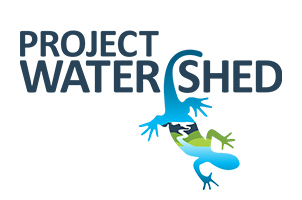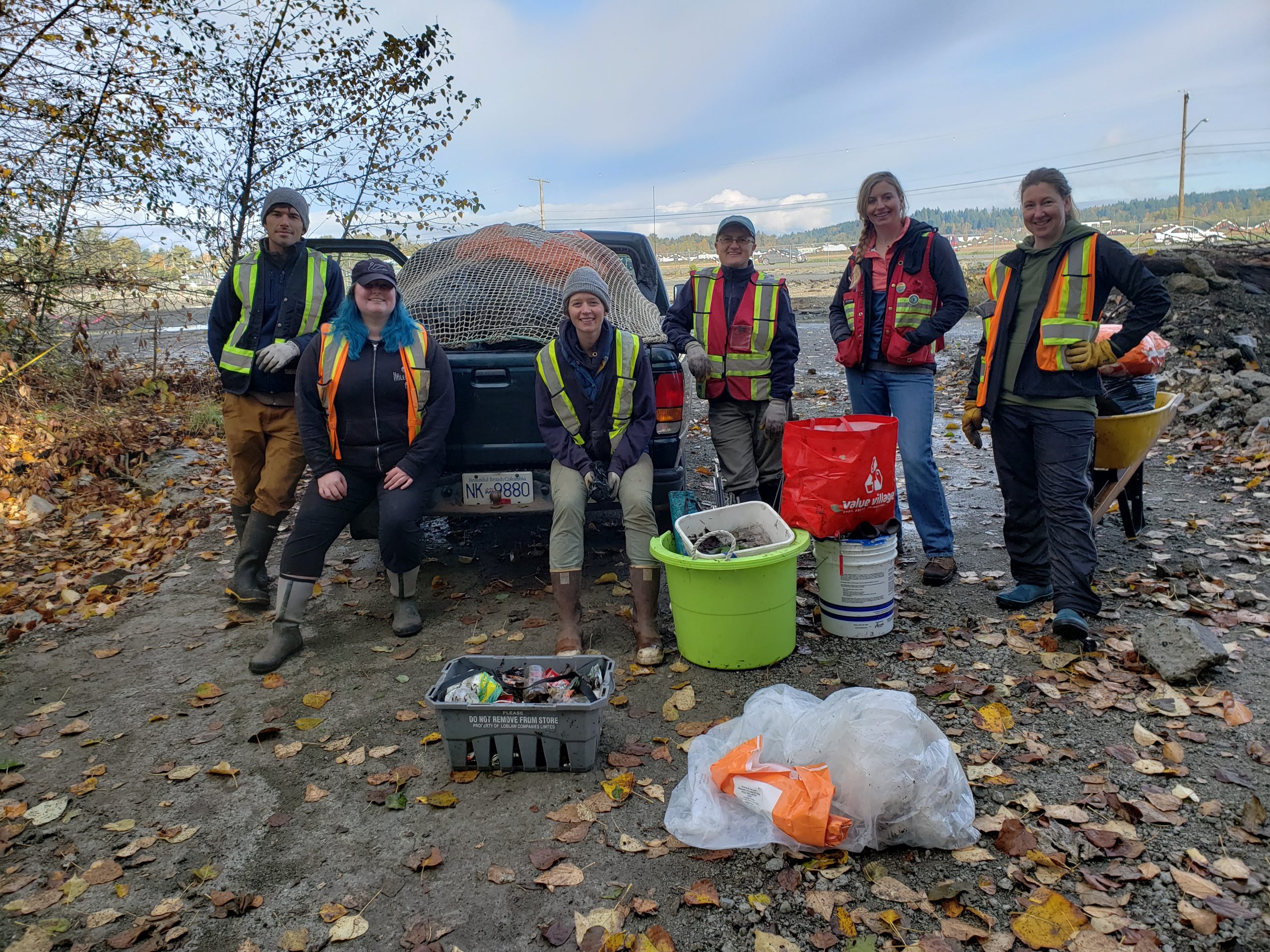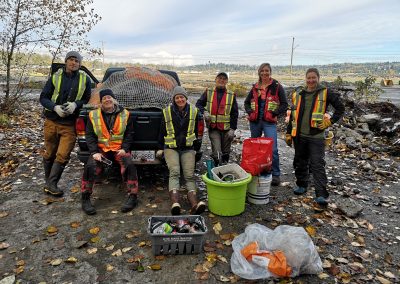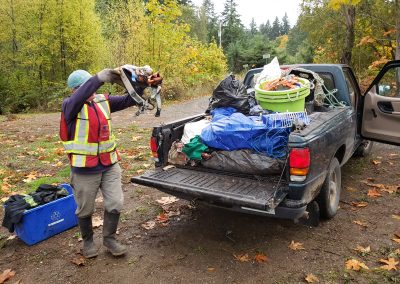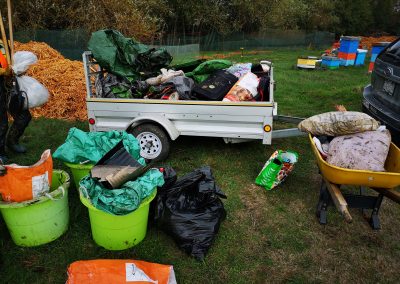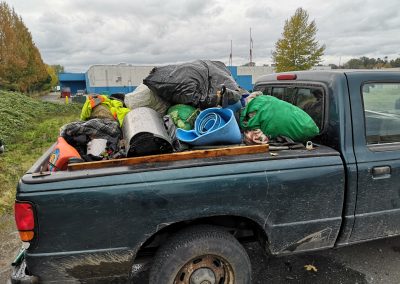Technician Report – Tuesday, October 26th
Cleanup Team ~ By Lisa Pierce
Many communities are facing an increasing number of homeless and at-risk folks, especially as many of our communities don’t have adequate housing resources. Folks without stable housing may be displaced and often seek refuge in wooded areas and set up camps. For various reasons, people may move on from these areas quickly, abandoning all their possessions and seeking refuge in other places. When camps are abandoned on stream banks, like Glen Urquhart, these items can wash into the waterways. These items may also reach our beaches and open ocean. Because temporary encampments may be necessary ways for certain folks to seek refuge, cleaning up these areas once they are abandoned is a way we can help and lessen the impact on our environment at the same time.
Project Watershed would like to thank Comox Valley Coalition to End Homelessness for their help with this cleanup and the work they do to support people, who, for whatever reason, are without permanent housing.
Four truckloads of garbage (950 kg) were removed from Glen Urquhart Creek and Hollyhock Flats including various clothing, bedding, household goods, and even a mattress. Several shopping carts were also retrieved from the stream and returned to their respective grocery stores. If anything was in good condition, it was set aside for donation. The refuse was taken to a sorting facility to sort and recycle as much as possible before taking the rest to the landfill.
Have you seen abandoned camps in your area? Contact the Comox Valley Coalition to End Homelessness to report them for investigation. Never approach or attempt to clean up camps yourself as they may be occupied and can have safety hazards such as hypodermic needles.
With the help of the Healthy Watersheds Initiative funding Project Watershed has hired environmental technicians to assist with our projects over the summer and early fall. The Healthy Watersheds Initiative is delivered by the Real Estate Foundation of BC and Watersheds BC, with financial support from the Province of British Columbia as part of its $10-billion COVID-19 response. Jamie Lund, one of these technicians, will be posting a brief report every Tuesday to update the Project Watershed community on what they have been up to.
Related Posts
Mallard Creek Restoration Update for 2024
Restoration work in Mallard Creek will continue this year, including invasive removal, restoring connectivity, and trial planting of a new riparian species. Volunteer events starting in September 2024.
Volunteer at Kus-kus-sum Chamber of Commerce Event
We are showing Kus-kus-sum off to businesses in the Valley through a Chamber Business to Business event. We are looking for a few volunteers to assist with this event.
Coastal Plant Monitoring
Get involved with our new vegetation community science monitoring program!
Spring Field Trips
Throughout May and June Project Watershed will be taking elementary school classes out on field trips to learn about estuary and coastal ecology and to assist with planting and plant maintenance.
Working Together to Identify Forage Fish Spawning Beaches
This year marks the 5th year of a partnership between Comox Valley Project Watershed Society and North Island College on a long-term study to examine intertidal spawning habitats of forage fish in the northern Salish Sea.
Glen Urquhart Update – Spring 2024
Latest news from Glen Urquhart restoration progress for spring 2024.

